Babies begin their sensory development long before they take their first breath. Even before birth, babies eagerly sense the world around them through sounds, touch receptors, and even taste in utero. Once they’re born, then the real sensory play fun can begin.
In this article, we share why sensory play for babies is important, along with 12 of our favourite sensory activities for you to try.
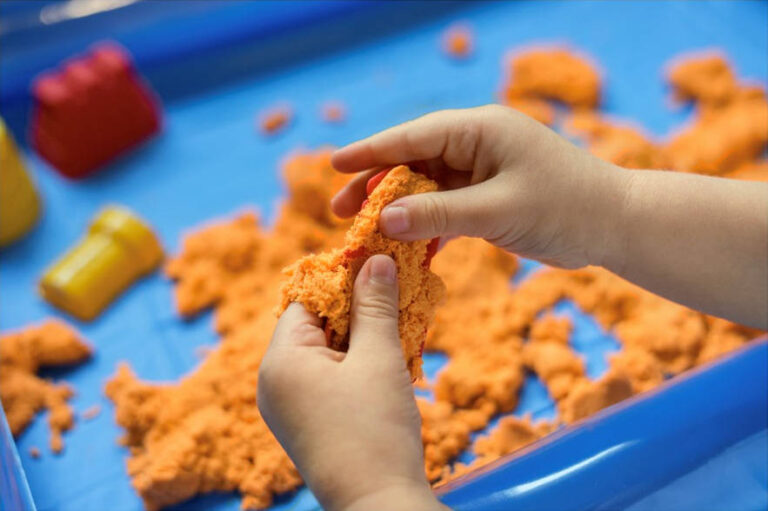
What is sensory play?
We all know about the five main senses: touch, sight, sound, smell and taste. You may be less familiar with the final three sensory systems:
- Vestibular (balance and orientation in space)
- Proprioception (sense of muscle or joint movements)
- Interoception (internal sensors of the body)
When we talk about sensory play for babies, it can span from trying new foods to balancing. Sensory play in nurseries often focuses on tactile experiences like messy play activities and comparing different materials.
All sensory play activities are important for brain development. After all, new experiences = new neural pathways being built.
Why are sensory activities for babies important?
Babies interact with their world using their senses. In fact, we all do. The difference between how adults and babies use their senses to understand the world boils down to comprehension and life experiences.
Some babies in your setting will be experiencing their firsts when you introduce them to sensory activities – this is a pretty big deal!
It can be helpful to reframe your thinking when planning sensory play activities. Rather than thinking of sensory play as a bit of fun you know the children will enjoy, consider the activities as a neural pathway connection, either strengthening an existing pathway or forging a new one. This can help to keep your play ideas creative.
If you’re fresh out of new and creative sensory play ideas, not to worry. We share 12 of our favourites further down this article.
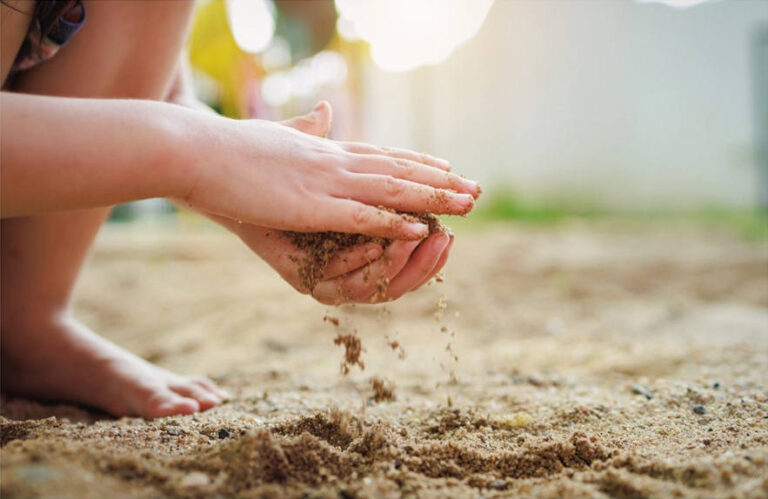
What are the benefits of sensory play?
In short, there are no drawbacks to allowing children to engage in sensory play (aside from the possible clean-up).
Baby sensory activities allow children to build skills in:
- Physical development (fine and gross motor skills)
- Communication and language
- Language acquisition
- Early mathematics
- Problem-solving
- Sharing and turn-taking
Sensory activities for babies to try
The beauty of EYFS sensory activities is that they are flexible and perfectly lend themselves to free-flow play and child-led learning. They can be enjoyed as a group activity or explored independently and, of course, can help children on their never-ending mission to make parents do more laundry!
Messy play is great. The children love it, and it helps with their development in so many ways. But… we understand clean-up in nurseries has to be practical. If you’re looking for contained messy play ideas, you can access a whole list of EYFS tuff tray activity ideas on our Blossom blog.
Let’s look at 12 of the best sensory activities to try. We’ve collated a range from all five main sensory systems and have babies in mind, so supervision is an expectation for every activity.
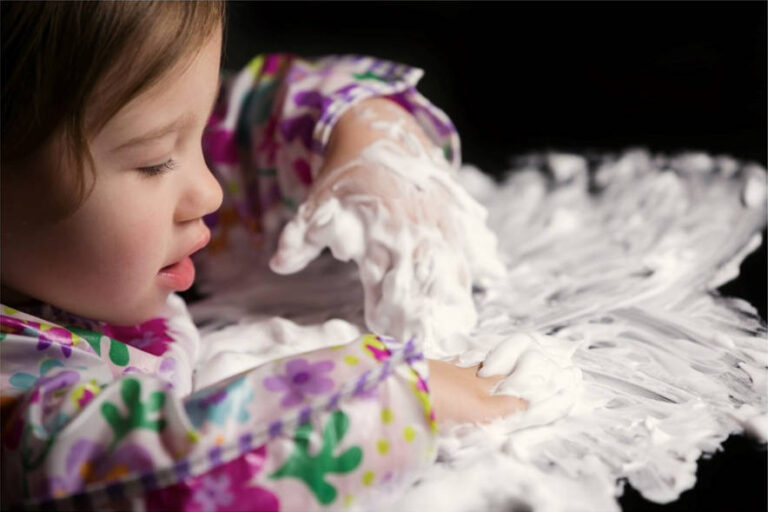
1. Fruit tasting
Ensuring you have permission from parents first, encourage children to try new flavours and textures. If your babies are enjoying a few select fruits and are new to the world of solid food, try to use their selected fruits in different textures.
For example, bananas can be sliced, mushed, cooled and/or mixed with other fruits.
Remember, the NHS recommends that children under the age of 5 avoid smoothies due to the high risk of tooth decay.
2. The sound of nature
A baby’s hearing develops in utero, with studies showing preferences for stories heard on the inside even long after birth.
Sit with babies and toddlers outside and listen to nature – the birds tweeting and the rustle of the leaves.
If the children are a little older, they may be able to identify some sounds they can hear. While promoting sensory experiences, you will also lay the initial foundations for mindfulness activities, which are a key part of building mentally healthy habits with children.
3. Spaghetti monsters
Budgets are tight, and finding household materials that can double up as sensory resources can help those purse strings. Cooked (and cooled) pasta is a versatile resource for sensory and messy play activities.
Not only is there confidence that the materials will pass a safety taste test, but the texture is also interesting for children (you may not agree when you are fishing it out of the sink).
Top Tip: Ensure you check children’s profiles to be aware of any children who may have medical conditions like Coeliac Disease and must avoid materials with gluten (this also means some play dough!).
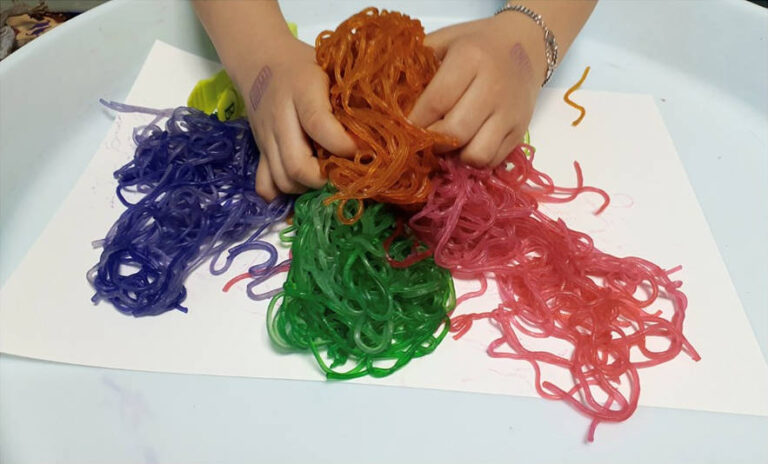
4. All of the lights
Inspired by the little learning club – We know babies and toddlers love bright lights. You can get a little crafty to give children the twinkle of stars during the daytime.
Using a large recycled box, poke holes in the top with a sharp pencil. Next, feed some battery-powered fairly lights into the holes. Once the switch is flicked, your babies can lie on a cushion or blanket in the box and enjoy the twinkly lights.
5. Tasty slime
Messy play is a key part of sensory development. Feeling cold, warm, soft, and mushy materials is all part of the fun – slime can tick all of those boxes. There are lots of ways you can make your own slime that is baby-suitable.
Of course, they should always be carefully monitored when using any slime. Making ‘edible’ slime can mean when the temptation to taste becomes too much, you can be confident they aren’t tasting toxic ingredients (although slime is not recommended to ever be consumed).
6. Bubble wrap feet
If you have some bubble wrap lying around, you can use it in a creative, sensory activity – like bubble wrap painting!
Carefully place bubble wrap onto feet or hands – you can secure this however is comfortable. Encourage children to walk through paint wearing their fancy footwear. Giving them additional support to keep their balance, the popping of the bubble wrap and the texture on their feet will be a new one for most!
7. Sensory board for babies
A sensory board can be an excellent source of entertainment for babies enjoying tummy time. Use a large piece of cardboard and securely place lots of bite-sized materials onto the board for babies to feel.
You might want to try adding:
- Ribbon
- Sponge
- Tea towel
- Silky material
- An opened cupcake case
- Bubble wrap
- Felt
8. Homemade rattles
A homemade rattle can be a favourite, versatile baby sensory toy. All you’ll need is a recycled drink bottle and some small objects. If you’d like a softer noise when it is shaken, try adding pom poms or foil balls into the bottle. For more of a racket, you can try buttons or pasta pieces.
Top Tip: Always ensure the lid to the bottles can’t be opened by dexterous little hands.
9. Hap-pea babies
Peas are a healthy food option and an excellent addition to the baby sensory resources list – who knew? For this activity, you’ll need peas, a plastic wallet, waterproof or suitably strong tape, and a little bit of water.
Add a small amount of water to the plastic wallet and add in the peas. Securely fasten the end of the plastic wallet with strong, waterproof Sellotape or something similar. Babies can smush the peas with the water while enjoying tummy time.
10. Man in the mirror
It takes a toddler about 18 months to realise that the man in the mirror is actually them. Mirror play helps babies identify familiar faces, track movements, and develop the important muscles needed to grab (these will be well used, as we all know!).
Handheld mirrors can be a great source of simple entertainment and sensory activity that can build with their understanding of reflection.
11. Balancing act
Helping with core strength and coordination, helping toddlers to walk over different textures and terrains can help their vestibular sensory system. Including some balancing objects in a small sensory circuit can help support children with hyper (overstimulated) or hypo (under-stimulated) sensory systems.
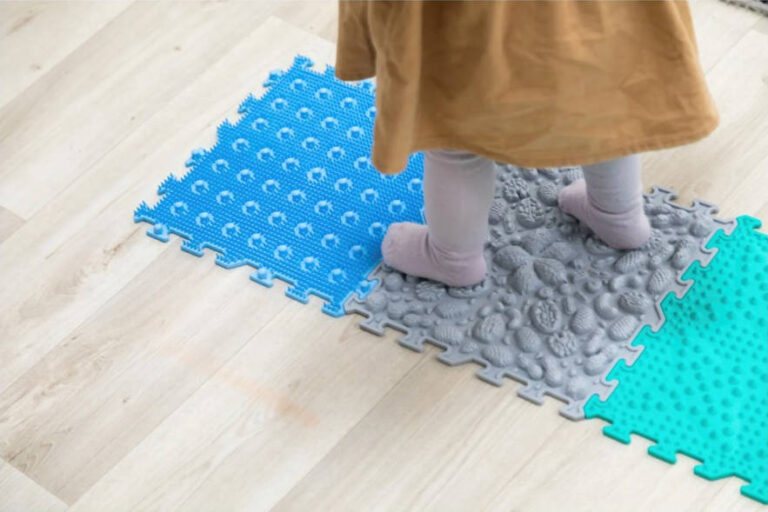
12. Tuff tray activities
As promised, a tidy way to engage in sensory or messy play. EYFS tuff trays are a firm favourite with children and practitioners alike. It can make clean-up easy and keep sensory materials like water play contained.
Consider experimenting with a giant melting ice cube or shaving foam for an exciting tactile experience.
Baby Sensory UK: Advice from the experts
We spoke to Sean McKeon, the Managing Director for Wow World Group (they own Baby Sensory UK), about the importance baby sensory classes have on child development.
"Baby Sensory offers parents the chance to stimulate their baby's developing senses in a supportive and helpful environment with expert session leaders. Babies really benefit from tactile engagement from birth — nurseries are a great place to introduce sensory activities as well as our nationwide Baby Sensory classes.”
Sean McKeon, the Managing Director for Wow World Group